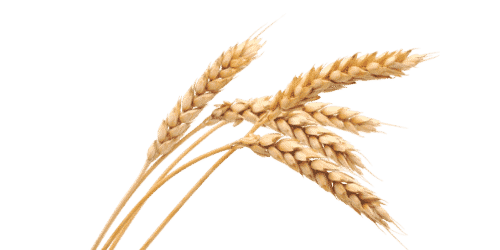
Origin
Originating in the Middle East, wheat has been cultivated since prehistoric times. It is now grown in European in the Mediterranean region. But it can also be found in Canada and the Ukraine.
Did you know?
Neolithic people were already cultivating wheat which is now the most consumed cereal in the world. The wheat germ is the essential part of the grain as it allows for the plant’s reproduction. It represents approximately 3% of the total weight of the grain.
Characteristics
It is a herbaceous perennial plant that can grow up to 1.50 m in height. It is made up of a cylindrical stalk with leaves and an ear. It also has a caryopsis fruit, i.e. the wheat grain is both the fruit and the grain.
Cultivation and harvesting
Wheat is grown in fairly neutral or chalky soils. It needs to exposed to full sun so that it can germinate. It is usually harvested when the stalk is dry and the wheat ear begin to curve. They should be “straw yellow” in colour. The grains, the germ, the bran, the flour and germ oil are used in phytotherapy.
Benefits
Wheat is very rich in fats (15%) and contains fibre, protein, vitamins B and E, minerals and amino acids.1
It:
- Fortifies the hair and nourishes the skin2
Wheatgerm is used externally in the field of cosmetic products. It helps to repair dry and damaged hair, making it stronger and more resistant. It also helps to nourish the skin to combat premature lines and wrinkles.
- Aids digestion2
The wheat bran fibre contributes to speeding up intestinal transit, promoting therefore better digestion.
1https://jardinage.lemonde.fr/dossier-1415-ble-triticum.html
2https://alimentation.ooreka.fr/astuce/voir/529869/germe-de-ble
